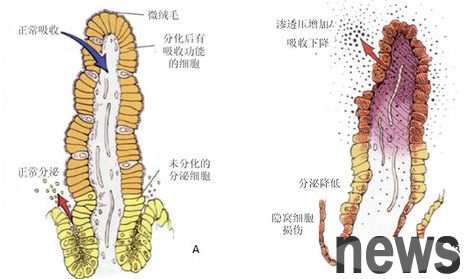Canine coronavirus disease is an acute intestinal infectious disease caused by canine coronavirus. Canine coronavirus can cause gastroenteritis symptoms of different degrees to the dog, characterized by frequent vomiting, diarrhea, depression, anore...
Canine coronavirus disease is an acute intestinal infectious disease caused by canine coronavirus. Canine coronavirus can cause gastroenteritis symptoms of different degrees to the dog, characterized by frequent vomiting, diarrhea, depression, anorexia and other symptoms. This disease can occur all year round and is often seen in winter. Sick dogs are the main infectious agent, and dogs can be contagious through the respiratory tract, digestive tract, feces and pollutants. Once this disease occurs, it is difficult for pet dogs in the same litter and pet dogs in the same room to control the infection. This disease is often mixed with canine parvovirus, rotavirus and other gastrointestinal diseases.

Canitary Coronavirus Introduction
Canitary Coronavirus (CCV) is a single-stranded RNA virus with a capsule. The virus is mainly oral infection, which invades villous epithelial cells, and then becomes thick and short, causing the dog's digestive enzymes and intestinal absorption function to lose, and eventually lead to diarrhea. There are currently no reports of viremia or infection of other internal organs in this disease. For dogs, dogs of different breeds, genders and ages can be infected, and puppies are most susceptible to infection due to poor resistance, with an incidence rate of almost 100% and a mortality rate of 50%. Sick and poisonous dogs are the main sources of infection. Viruses are transmitted to healthy dogs and other susceptible animals through direct and indirect contact. This disease can occur all year round, but it is often found in winter. Stress factors such as climate change, poor sanitation conditions, large density of dogs, weaning and transferring houses and long-distance transportation may all cause this disease.

causes of canine coronavirus
Canine coronavirus disease is caused by canine coronavirus. Canine coronavirus can infect dogs of all breeds and ages (harmful as puppies), causing dogs to develop gastroenteritis symptoms of varying degrees and seriousness. They may frequently vomit, diarrhea, depression, and anorexia in clinical practice. They can still recur 14 to 21 days after the clinical symptoms disappear. It is a major infectious disease that currently endangers the dog breeding industry. The route of infection is the digestive tract, which is mainly caused by contact with feces and pollutants excreted by sick dogs. The virus survives in feces for 6 to 9 days, and pollutants can remain contagious in water for several days. Canine coronavirus can react with antiserum of feline infectious peritonitis virus and pig infectious gastroenteritis virus, indicating that the three may be a group of viruses. The virus is sensitive to heat, ultraviolet rays and general chemicals.
Cannual coronavirus symptoms
Incubation period 1 to 8 days. The disease is rapidly contagious and can spread throughout the population within a few days. Generally, they first show drowsiness, weakness, and repeated vomiting. Later, the feces go from pasty, semi-paste to watery, orange or green, containing mucus or blood, with fever or no fever, leukocytes decrease, rapid dehydration, and death. As the age of age increases, the mortality rate decreases. Some cases do not show clinical symptoms. Canine coronavirus is often mixed with parvovirus, which constitutes a pandemic of diarrhea in dogs.
Cannus coronavirus diagnosis
Does there be a coronavirus epidemic based on local disease epidemic situation; preliminary judgment of clinical characteristics; colloidal gold test strips (generally, fine and coronal).
Cannual coronavirus treatment
Use symptomatic treatments, such as antiemetic, stop diarrhea, and rehydration, use antibiotics to prevent secondary infection, and fast and stop water immediately. Coronavirus is a gastrointestinal disease, and it is necessary to fast and stop water. If there is food and water in the stomach and intestines, bacteria will always be present and diarrhea will be more frequent. Then take it to the "regular veterinary station" for infusion of anti-inflammatory and nutrient solution, and then get serum. Generally, seven-day course of treatment can recover. The chance of curing coronavirus is about 95%. The vaccine has no preventive effect on canine coronavirus disease. Measures to reduce the incidence of the disease are to strengthen feeding management and strictly implement veterinary hygiene measures.
Warm reminder:
During the illness, Immune infusion is required due to vomiting and being unable to fast. After the situation improves, let him slowly and actively eat some easily digestible foods. After the dog's illness is cured, it is still not fully recovered due to intestinal damage. It is best to give some intestinal prescription food to reduce the burden on the gastrointestinal tract, but the process of replacement should be gradually improved and not replaced at once; or supplement some intestinal probiotics and soak the dog food to give it enough food.
Don't raise other animals at home within half a year, not only dogs, but also cats. Because the coronavirus in dogs and the coronavirus in cats have certain homology, it may cross-infection, leading to infectious enteritis and even FIP in cats. Half a month after the disease is cured, you can go to an immunization to prevent other virus infections.